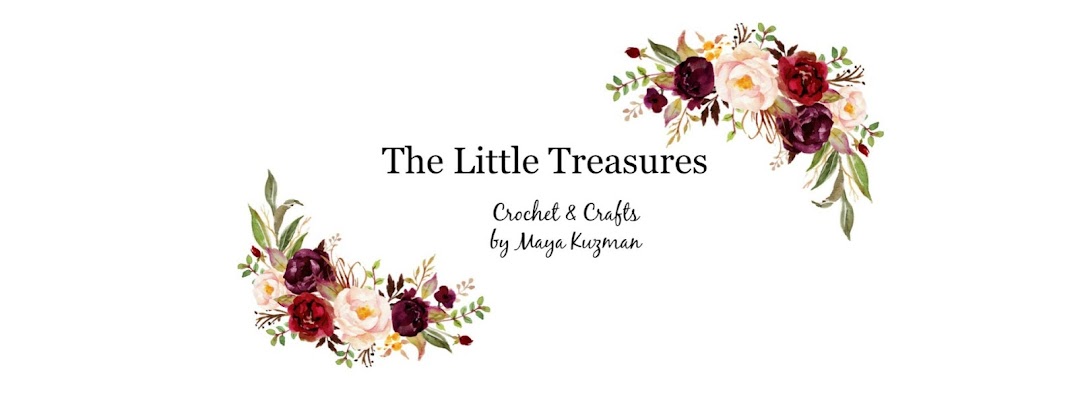It was one of Ruta's heavenly birds that captured my attention and it opened the gates to Ruta's amazingly mind-blowing world of micro crochet. I invited her over for an interview, so let's find out more about this masterful designer.
Hello Ruta and welcome to the blog!
Please introduce yourself to my readers- who is Ruta privately and professionally?
I am a crochet loving caffeine junky. Sewing thread hoarder. Princess on a bead.
You
earned your bachelor and master’s textiles degree at the Vilnius Art Academy,
Faculty of Arts in Kaunas. Who was most influential in your work /inspiration
and how did your artistic career develop through the years?
All of my teachers where and are very strong personalities, incredible artists. Of course, some of them had more influence, but I think it would be politically incorrect to exclude any of them:)
I am just glad to have studied in the period they were professors at the academy.
I've come to understand that you participated in the costume making for theater plays. What did that engagement require and what kind of costumes did you make?
Yes, the theater is always in my life, even though I hate it. :) Just kidding. Although, even if I don't actively pursue work in the theater, somehow I end up there. Just finished one in Oslo where I was a scenographer.
Your micro crochet jewelry is dazzling, unique and extraordinary, made out of the thinnest sewing threads. How did sewing threads enter your life and enchant you?
My grandmother is a seamstress, her house was full of sewing threads and fabrics. It was natural. Later during my studies I remember I bought an old box at a flea market where I accidentally found a 0,75mm hook. And I was hooked.
Besides sewing threads that are your signature tool for telling your stories and expressing your world, what other materials do you enjoy using and incorporating in your pieces?
For me the most favorite place in the world is a hardware store, when I get to one I feel like a child in a candy store – I go nuts - I want to buy everything and implement in to my work. Of course I have some preferences, my number one favorite material, after sewing threads of course, is beads. But for now they are stored in large quantities under my bed waiting for their turn.
Your
portfolio looks like a wondrous, colorful storybook. As a motif, paradise birds
seem to be your signature pieces. Can you please share the process of creating
one? What does the birth of a bird look like? It looks like a lengthy process
because your work is immaculate to perfection and extremely detailed.
There
are a few stages: first of all I gather all my threads and I stare at them Oo. I
decide on the type and figure out the gamma. I begin with the feather. Since
crocheting is a long and sometimes meditating process, by the time I finish the
feather I usually contemplate the rest of the bird.
Apart
from birds, what other motifs do you like to work on?
I
would like to work on many things. I always have tons of projects circling my
mind but given the limited amount of
time we are given only few materialize. At the moment I'm obsessed with
victorian sentimental mourning hair jewelry. What comes next – only my doctor
knows :)
Your
participation in exhibitions is extensive and admirable. What exhibition had
the greatest impact and influence in your promotion as a micro crochet artist
?
I
only recently started to actively participate as a crotchet artist, so it's
kind of hard to pick one, but I think the honorable mention award I got from
the Triple Parade exhibition gave me a
boast.
Can
you describe an ordinary day working on your crochet pieces?
TV's
on, 1th cup of coffee, squirrel turning the wheel making electricity
for my TV. Nothings on. I prefer to dive strait into work while I'm drinking my
first cup of coffee but it all depends on the light and the time of the year.
For crocheting I usually need good lighting. In the summer I can work from
early morning to late at night.
What
part of the process is the most enjoyable? Is there a particular place where
you like to work?
I
would say manual labour – the actual crocheting – when I contemplate new ideas.
What
do you do in your free time?
Drink
coffee extensively and enjoy being lazy.
Your
plans for the future? Any upcoming exhibitions?
I
am opening my studio for Oslo Open festival this weekend. One of my birds is in
France right now, another one in the Netherlands and soon it will be traveling to
Ukraine. So my birds are pretty busy at the moment.
If you like Ruta's work, you can follow her on her social media: Web, IG FB.

























































